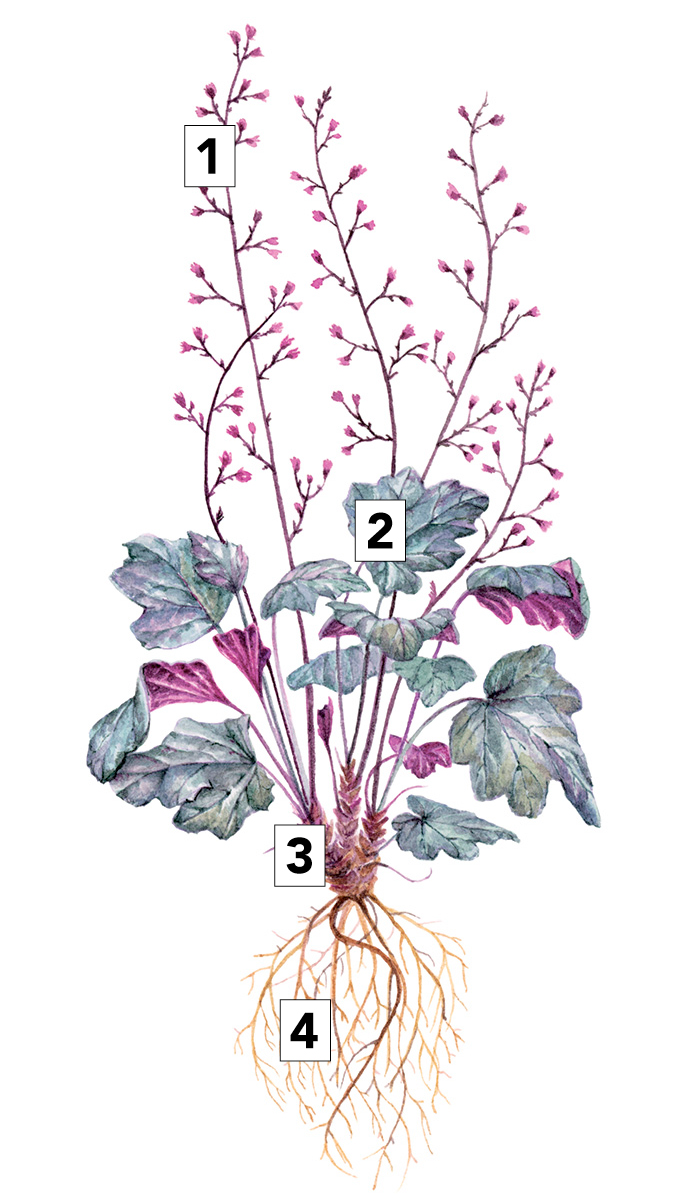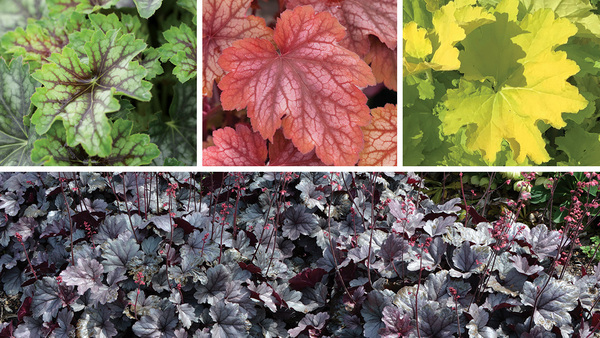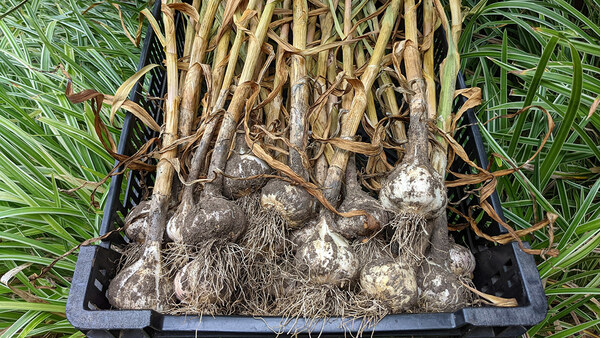
Heucheras are somewhere in between plant-them-and-forget-them perennials and high-maintenance divas. At home in garden beds and superstars in containers, they will reward you handsomely when given proper conditions and care. Follow these cultural guidelines to achieve the greatest heuchera success.
Location
While heucheras are generally native to woodland habits, these leafy beauties are suited to grow in full sun to partial shade. However, protection from afternoon sun is recommended, especially in warm climates, to prevent sunscald (photo above, left) and heat-stress-damaged leaves. Moist, well-drained, fertile soil is best. At all costs, avoid planting heucheras in wet locations, which will cause plants to languish (photo above, right).
|
|
Planting
Heucheras are best planted in spring at a depth that puts the crown at or slightly above the soil line. These plants are not heavy feeders, so there’s no need to fertilize them. At most, provide your plants with a shallow top-dressing of compost (less than an inch) at planting time and each spring. Just be sure to keep the compost several inches away from the crown to avoid rot.
Pruning
Snip off unsightly and desiccated foliage in spring and as needed. Deadheading is a gardener’s choice, but removing spent flower stems to the base keeps plants tidy and healthy.
Pests and diseases
Rust, fungal and bacterial leaf spotting, and nematodes can be problems for heucheras. There were no serious diseases observed in our trials, but minor leaf spotting was noted, and rabbits occasionally browsed flower stems in summer. Slugs and deer can also sometimes show interest in plants, but this rarely leads to a devastating level of damage.
Dividing
To increase the number of plants or rejuvenate declining specimens, divide heucheras every three years (or as needed) in spring. Dig a plant and gently pull apart its crown, keep the healthy divisions with roots, and immediately replant. Water well until established.
Winter woes
In my experience, heucheras can struggle in any season, but winter is especially tough on these shallow-rooted plants. Frost heave and foliar desiccation are common winter problems, but deer can also be the culprit. They nibble and tug plants out of the ground, leaving them exposed to the whims of winter. In mild winters or under good snow cover, the evergreen leaves may come through looking OK, only to become tattered, wilted, and brown-spotted as spring warms up. Cutting out old foliage unmasks the small healthy leaves clustered at the crown. Recovery can be slow for heaved or injured plants, so don’t give up too quickly on winter-scraggly heucheras. If you find your plants heaved, gently push or replant them back into the soil in spring.
Anatomy of a Heuchera
1. Panicle inflorescences
Small and airy, these branched flower stalks radiate from the tip of long, slender stems in late spring and summer.
2. Lobed leaves
The five- to nine-lobed heuchera leaves form on long petioles (leaf stems) that sprout from the tip of the woody basal stems and collectively form the plant’s mounded habit.
3. Caudex
This perennial crown structure is made up of multiple scaly, woody basal stems or stolons.
4. Fibrous roots
Drought tolerant once established, heucheras have a fibrous, shallow root system that is intolerant of wet sites and susceptible to frost heave.
Richard Hawke is an expert plantsman and the director of ornamental plant research at the Chicago Botanic Garden in Glencoe, Illinois.
Photos: Jennifer Benner



















Comments
Log in or create an account to post a comment.
Sign up Log in